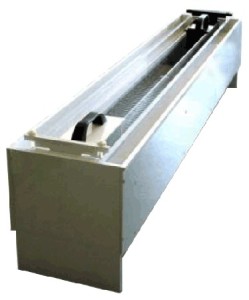Authors
M Stewart, PYP Lau, G Banks, RS Bains, E Castroflorio
Lab
MRC Harwell Institute, Harwell Campus, Oxfordshire OX11 0RD, UK
Journal
bioRxiv
Abstract
Loss of function mutations in the human AMPA receptor-associated protein, ferric chelate reductase 1-like (FRRS1L), are associated with a devastating neurological condition incorporating choreoathetosis, cognitive deficits and epileptic encephalopathies. Furthermore, evidence from overexpression and ex vivo studies have implicated FRRS1L in AMPA receptor biogenesis and assembly, suggesting that changes in glutamatergic signalling might underlie the disorder. Here, we investigated the neurological and neurobehavioural correlates of the disorder using a mouse Frrs1l null mutant. The study revealed several neurological defects that mirrored those seen in human patients. We established that mice lacking Frrs1l suffered from a broad spectrum of early-onset motor deficits with no progressive, age-related deterioration. Moreover, Frrs1l-/- mice were hyperactive irrespective of test environment, exhibited working memory deficits and displayed significant sleep fragmentation. Longitudinal electroencephalographic recordings also revealed abnormal EEG in Frrs1l-/- mice. Parallel investigations into disease aetiology identified a specific deficiency in AMPA receptor levels in the brain of Frrs1l-/- mice, while the general levels of several other synaptic components remained unchanged with no obvious alterations in the number of synapses. Furthermore, we established that Frrsl1 deletion results in glycosylation deficits in GLUA2 and GLUA4 AMPA receptor proteins, leading to cytoplasmic retention and a reduction of those specific AMPA receptor levels in the postsynaptic membrane. Overall, this study determines, for the first time in vivo, how loss of FRRS1L function can affect glutamatergic signalling and provides mechanistic insight into the development and progression of a human hyperkinetic disorder.
BIOSEB Instruments Used
Automatic Foot misplacement apparatus (BIO-FMA)
Source :

 Douleur - Allodynie/Hyperalgésie Thermique
Douleur - Allodynie/Hyperalgésie Thermique Douleur - Spontanée - Déficit de Posture
Douleur - Spontanée - Déficit de Posture Douleur - Allodynie/Hyperalgésie Mécanique
Douleur - Allodynie/Hyperalgésie Mécanique Apprentissage/Mémoire - Attention - Addiction
Apprentissage/Mémoire - Attention - Addiction Physiologie & Recherche Respiratoire
Physiologie & Recherche Respiratoire




































 Douleur
Douleur Système Nerveux Central (SNC)
Système Nerveux Central (SNC)  Neurodégénérescence
Neurodégénérescence Système sensoriel
Système sensoriel Système moteur
Système moteur Troubles de l'humeur
Troubles de l'humeur Autres pathologies
Autres pathologies Système musculaire
Système musculaire Articulations
Articulations Métabolisme
Métabolisme Thématiques transversales
Thématiques transversales Congrès & Meetings
Congrès & Meetings 